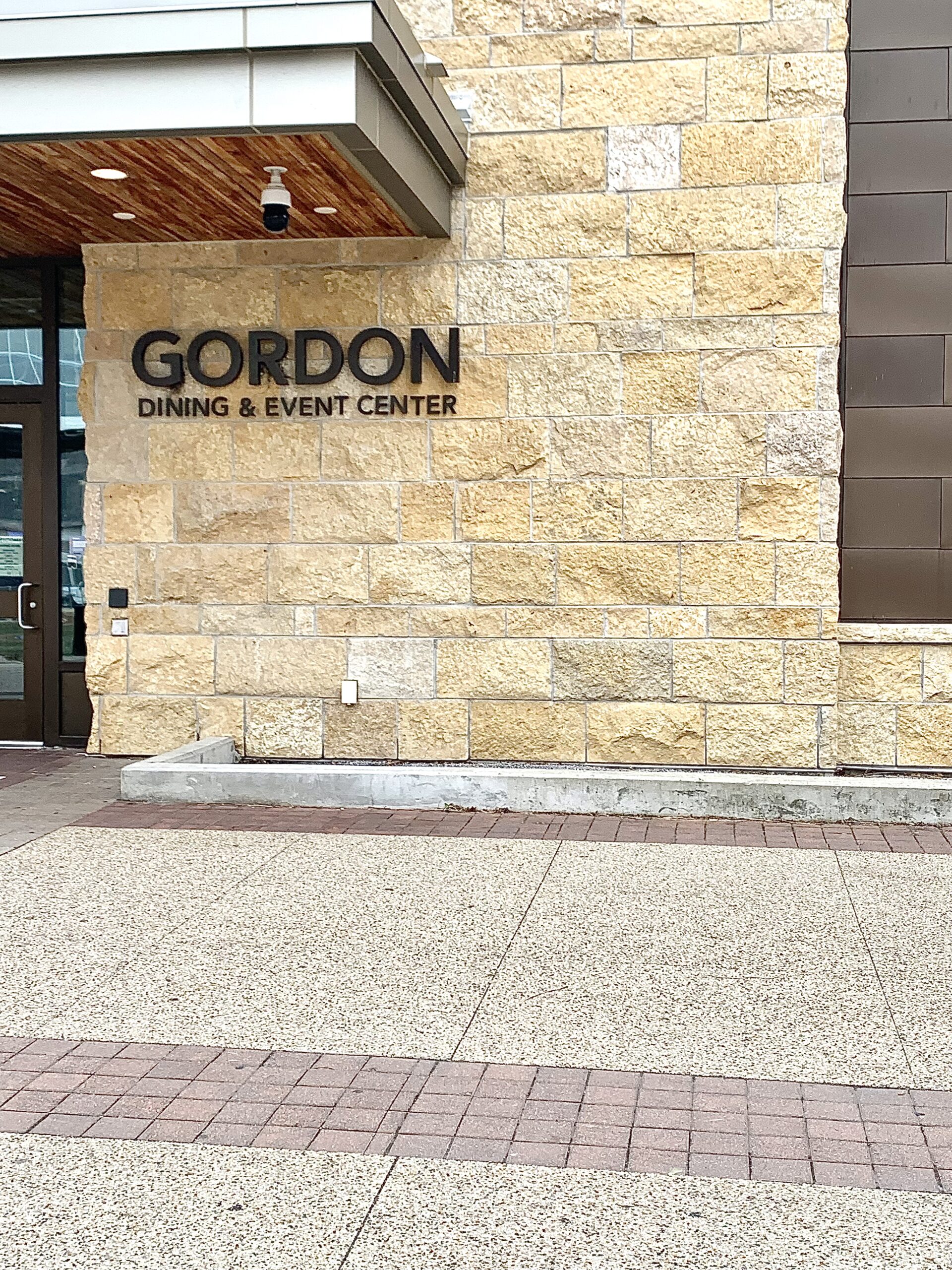Here is the west entrance of the Gordon Dining & Event Center or Gordon Avenue Market. It is one of the six dining marketplaces at the University of Wisconsin-Madison but remains the largest and most popular among students due to its central location. Despite size and food offering differences, every University-Housing marketplace offers the same accommodations for those with food allergies, intolerances, sensitivities or other special dietary needs.
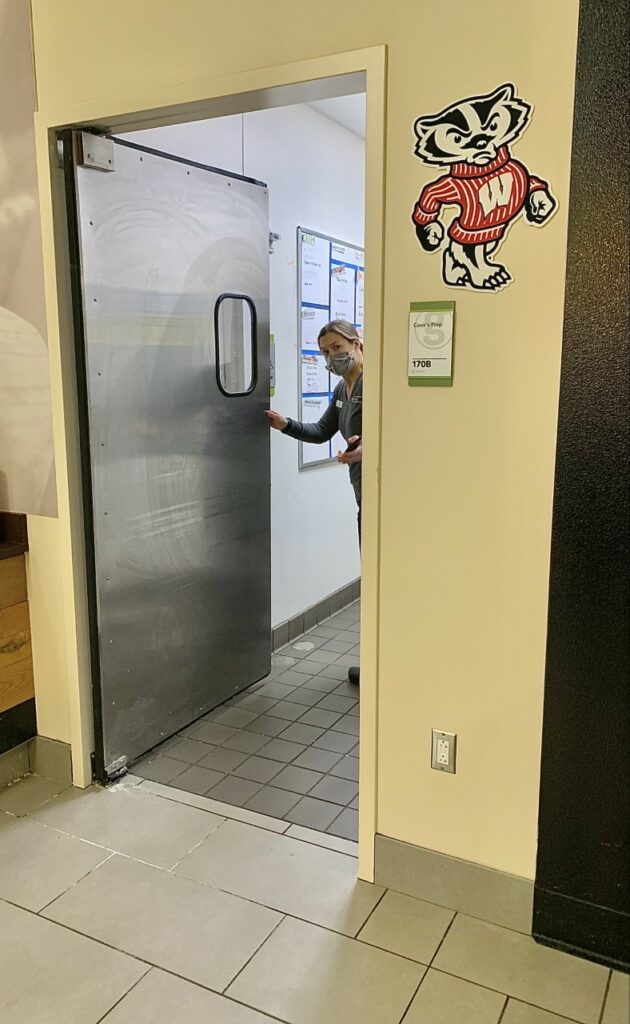
Agnes Sherman heading into the back towards the ‘cook’s prep’ or the cook’s kitchen. Sherman graduated from UW-Madison in 2001 with a degree in dietetics and her professional focus is on nutrition and sustainability. She is the main contact for students who have special dietary needs and concerns, but she is also a resource to students who don’t have special dietary needs as a nutritional and marketplace navigator aide.
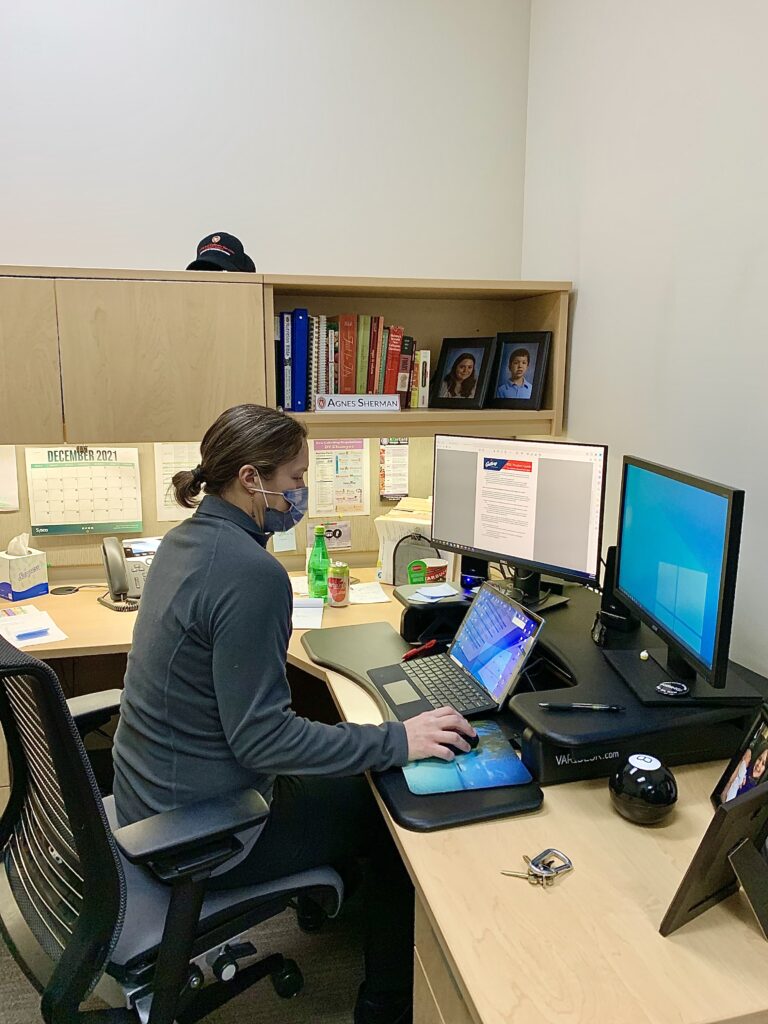
The first step in the dietary accommodation process is submitting an ‘Allergy/Dietary Requirement Self Declaration Form’ which is located on the University-Housing website (link: https://www.housing.wisc.edu/dining/nutrition/allergy-self-declaration/). These declarations go directly to Sherman who will then contact the student directly to discuss concerns. “I determine what their needs are and then we [Sherman and the student] come up with solutions to see how we can best meet their needs.” Sherman said.
During the accommodation process, Sherman will set up a custom profile for the student to use the OrderIt app (by Kinetica). The app is specifically designed for students with special dietary concerns like food allergies. The menu on the app is “static” meaning all meal options remain the same across all six University-Housing marketplaces on campus. The app is meant to be as inclusive to all “top-nine” allergens as possible and functions through a ‘build-your-own’ meal/order concept.
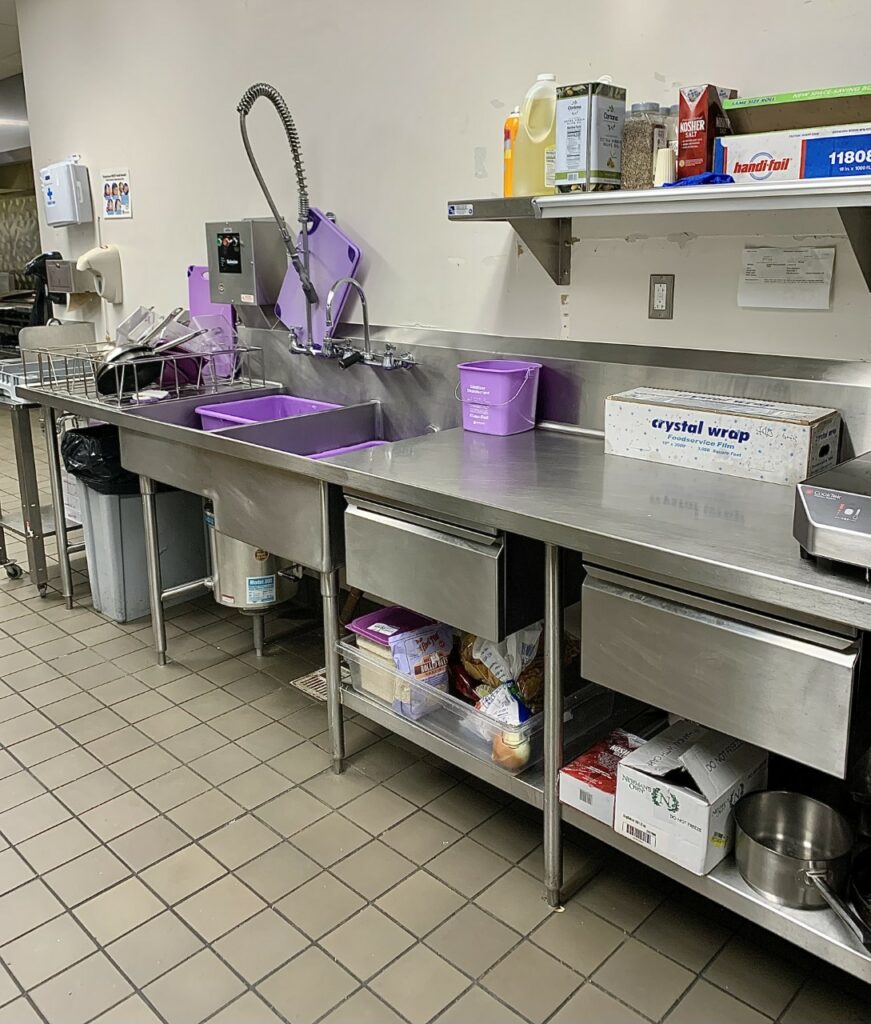
This section of the chef’s kitchen is known as the “purple” station. There is one in every University-Housing marketplace including the one here at Gordon’s. The purple color signifies a “top-nine” allergen-free food preparation, cooking, and packing area. The purpose of the purple station is to provide a safe area for OrderIt app meals to be processed. The purple station is distanced from other food preparation areas, has cooks and staff who have taken “AllerTrain” classes, has separate ingredient inventory and distinctive, purple-colored cooking tools.

The allergen-free, perishable produce used for OrderIT app orders is located in the freezer room inside the produce cart. Students who use the app can suffer from various food reactions like allergies, intolerances and/or sensitivities. Allergies, intolerances, and sensitivities are different from each other, and the terms should not be used interchangeably. An allergy involves an immune response to a food allergen which results in a severe bodily reaction. Jenna Stangland, a dietician, added, “An intolerance is more related to how a person digests the food protein whereas with a sensitivity a person can digest the food protein, but has a mild response to it like a skin reaction.”

Here is the inside view of the produce cart from the previous photo. The shelves and individual products are labeled for accuracy. The food in the produce cart is vetted for and free from the “top-nine” allergens including: milk, shellfish, eggs, tree nuts, fish, peanuts, wheat, soy, and the newly-added sesame. University-Housing also monitors food for less-common allergens like coconut and corn even though it is not yet federally mandated.
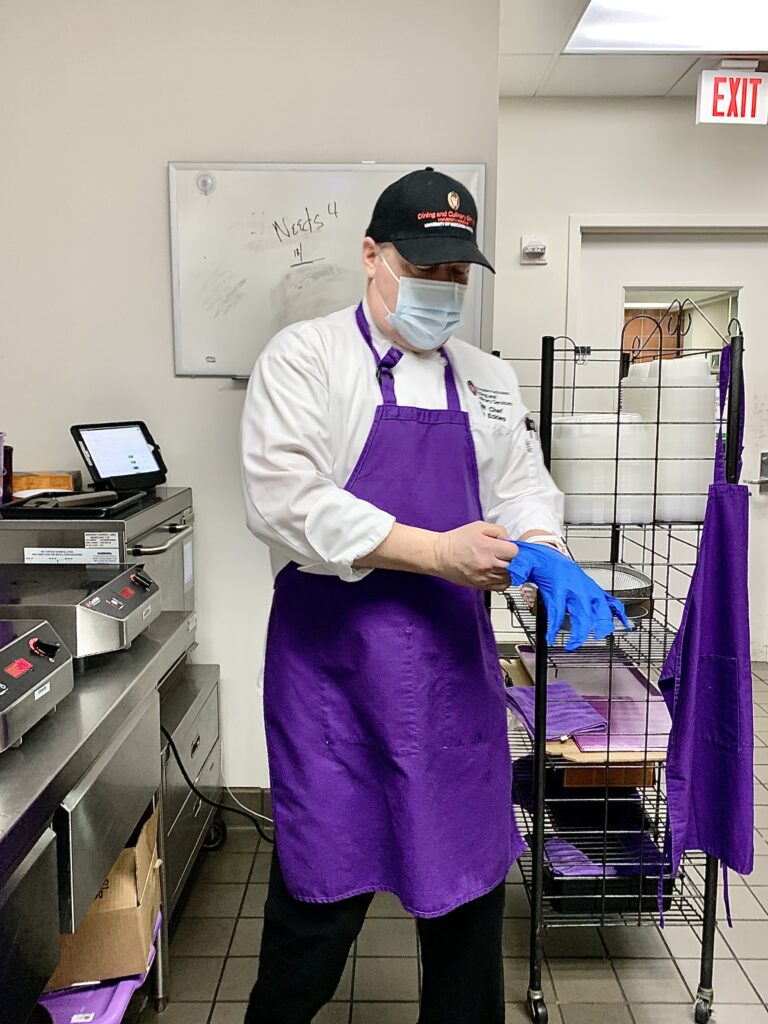
Eckles explains and then demonstrates the proper food-safety techniques used throughout all University-Housing marketplaces for food preparation, cooking, and processing. Before anything else, he sanitizes his workspace, washes his hands, and puts on gloves. He has put on a purple apron to signify to others that he is preparing, cooking, or processing an allergen-free meal. In the background there are several purple elements that make up the station including: towels, cutting boards, aprons, totes and various cooking utensils.
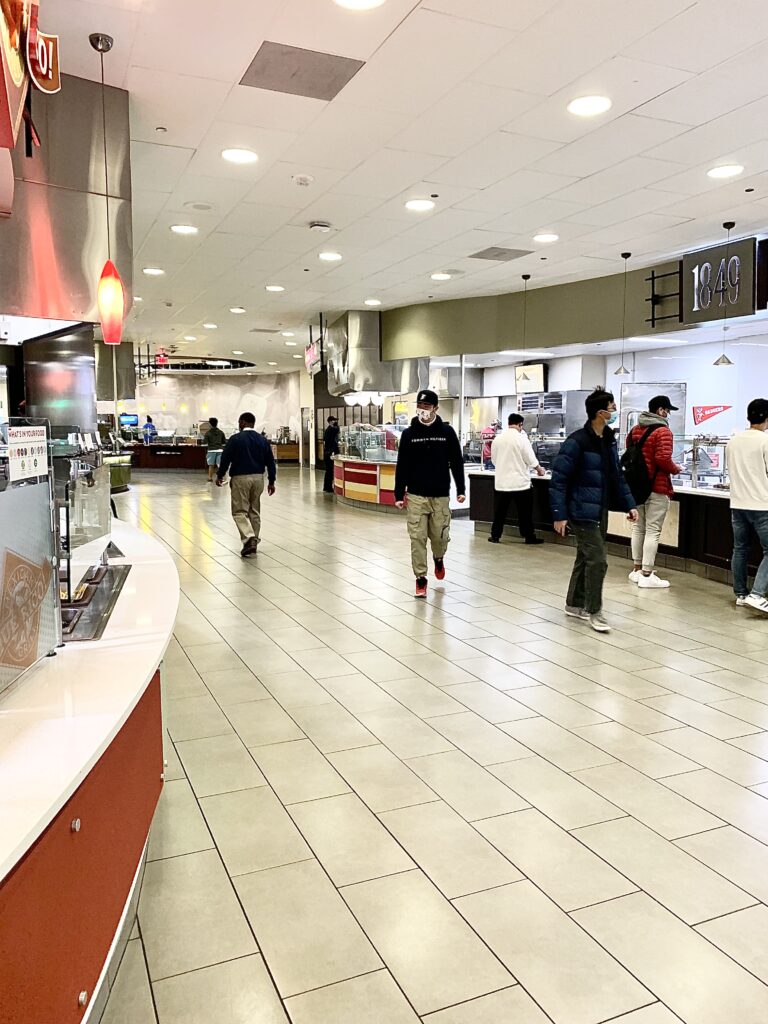
Students who have special dietary needs or concerns are not restricted to dining through the OrderIT app, although some students choose to use it exclusively out of personal preference or safety concerns. Michael Malek, a student with severe food allergies, said, “I always order exclusively through the app because you can’t guarantee things on the front line have been wiped down”. However, students that need accommodations and use the tools provided by Sherman and University-Housing Dining and Culinary Services can develop the skills they need to navigate their campus dining environment successfully.
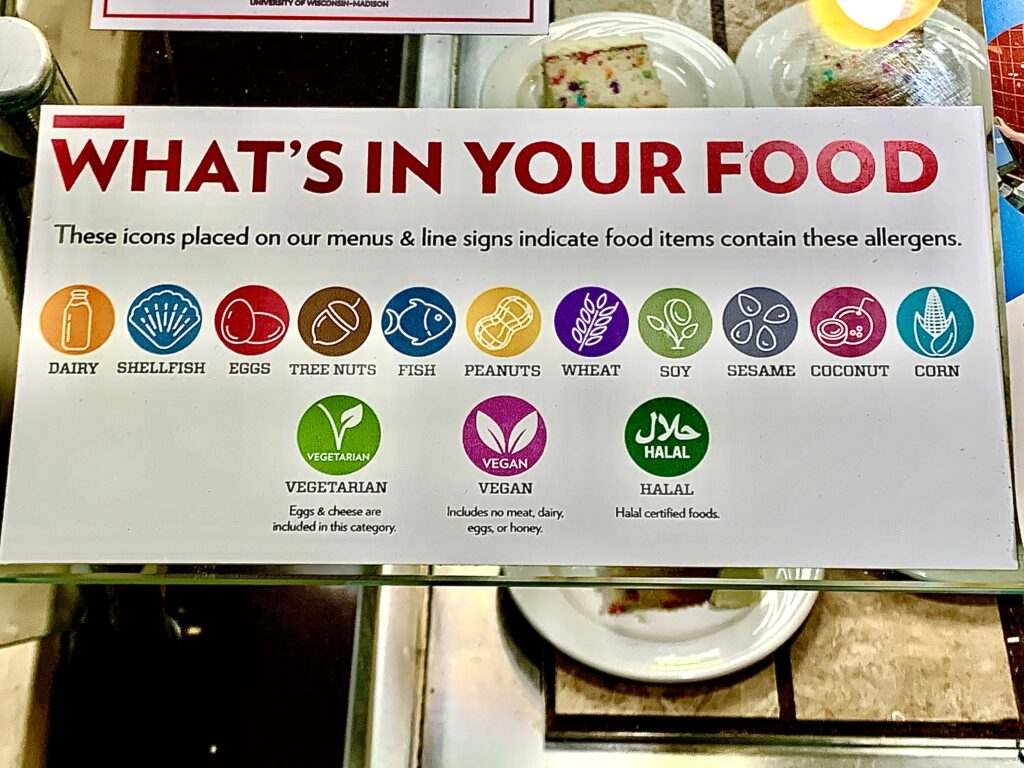
This is a typical food warning label that a student could find displayed throughout any University-Housing marketplace. The labels display the various icons used for the “top-nine” allergens, and dietary and religious preferences. The labels go beyond the “top-nine” allergens in that they include less-common ones like corn and coconut. Sherman said, “Within our database, we always try to mark as best as we can anything that’s vegan, vegetarian, or halal… we will follow certain guidelines to be able to distinguish those items.”
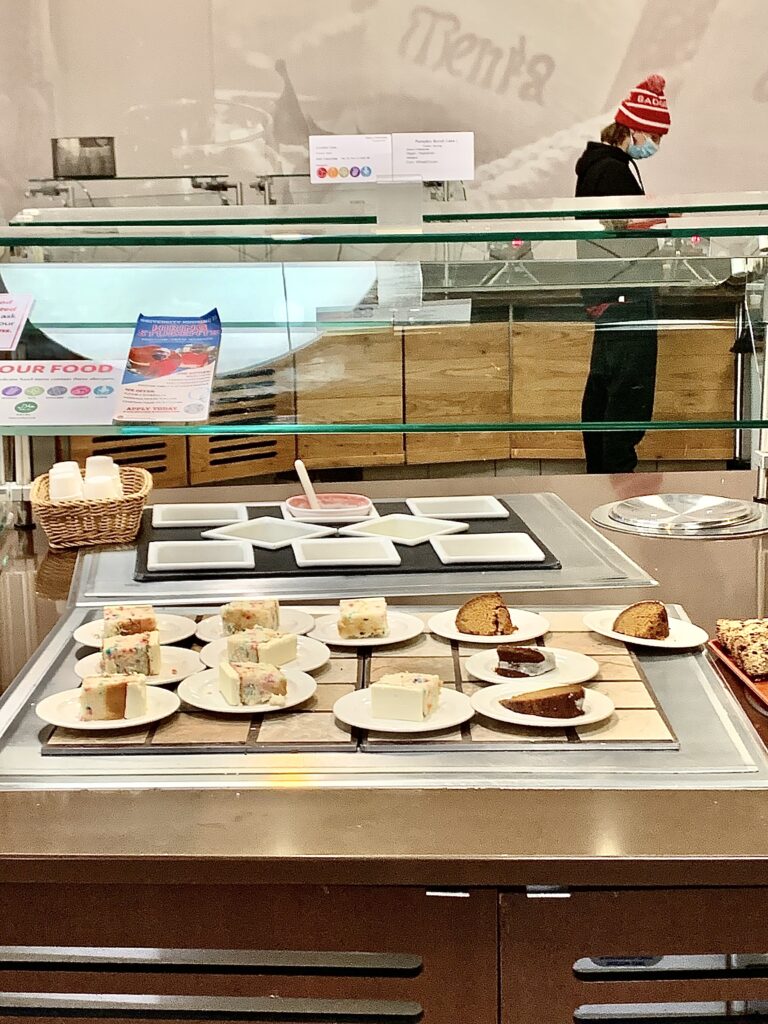
Located on the tile display for today’s lunchtime dessert menu are confetti and pumpkin bundt cakes. On any given day there is a variety of about six to seven dessert choices offered throughout serving times that reflect a variety of special dietary needs. “What we [University-Housing staff] try to do is to make sure we can offer a variety of food that sort of targets the needs of everybody in a way.” said Sherman. Also, good to note is the portion sizing on these items, all items have been re-portioned in smaller sizes for the 2021-2022 academic year in accordance to the change to “all-you-care-to-eat” dining
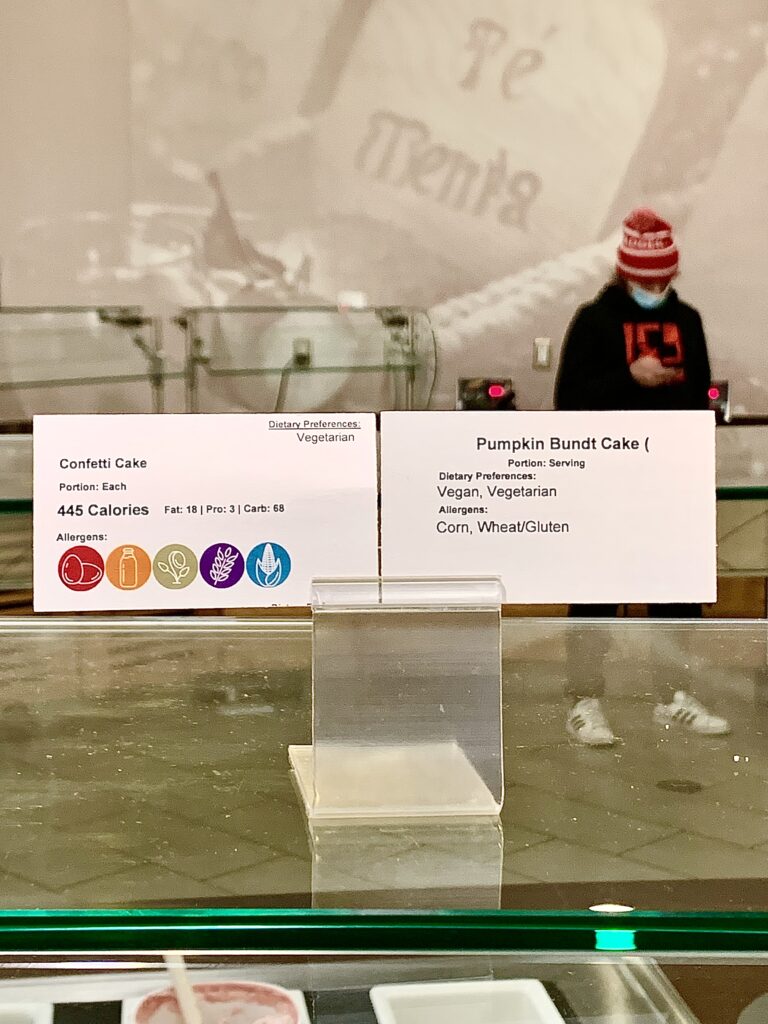
Individual product warning labels usually include all relevant food nutrition, allergy and dietary preference information. For example, on the confetti cake label there is basic nutrition information listed like a serving size recommendation, calorie content including all macronutrients, a dietary preference and allergy icons which, in this case, include eggs, milk, soy, wheat and corn. This is an incredibly useful tool for all students to vet nutritional content of any food item and to navigate their dining environment.
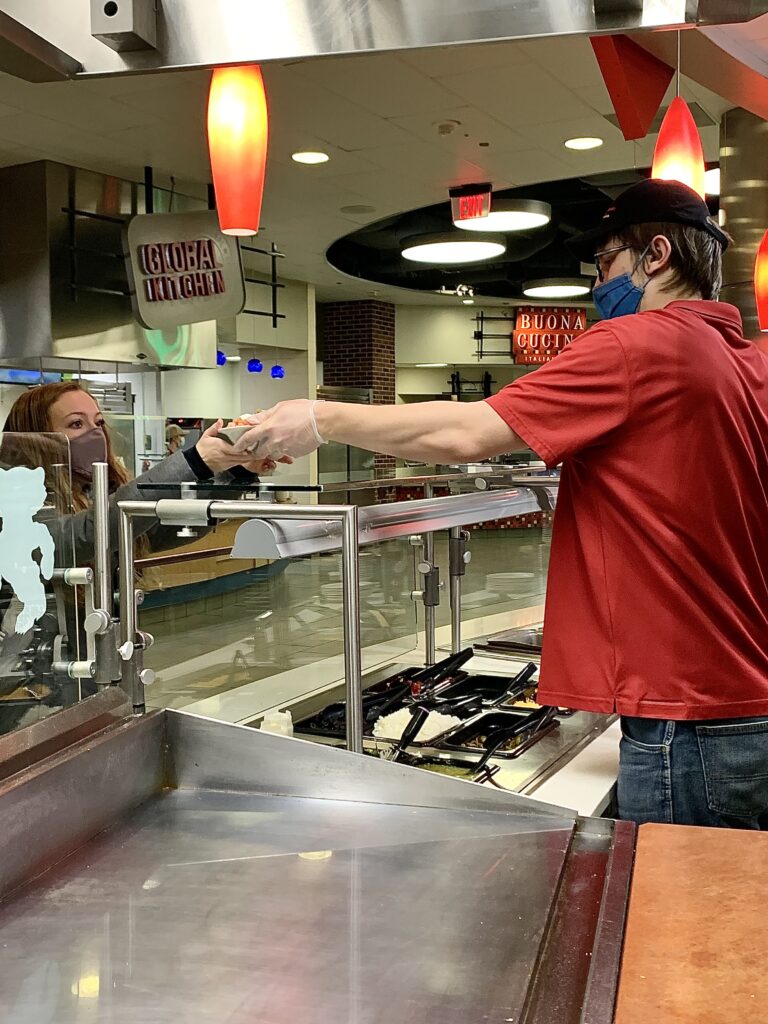
Qué Rico is a “build-your-own” style of venue where students can instruct employees on how they want their meal to be made. This venue is similar to the OrderIT app in that the meals are completely customizable. A variety of choices is not lost through customization, Malek who is able to customize every meal through the OrderIT app said, “There is enough food variety for my personal preference. I like to get the same two or three things, but I could absolutely expand on it if I wanted to”. Students who visit this venue have many options which rotate around burritos, quesadillas, tacos, rice and bean bowls daily.

